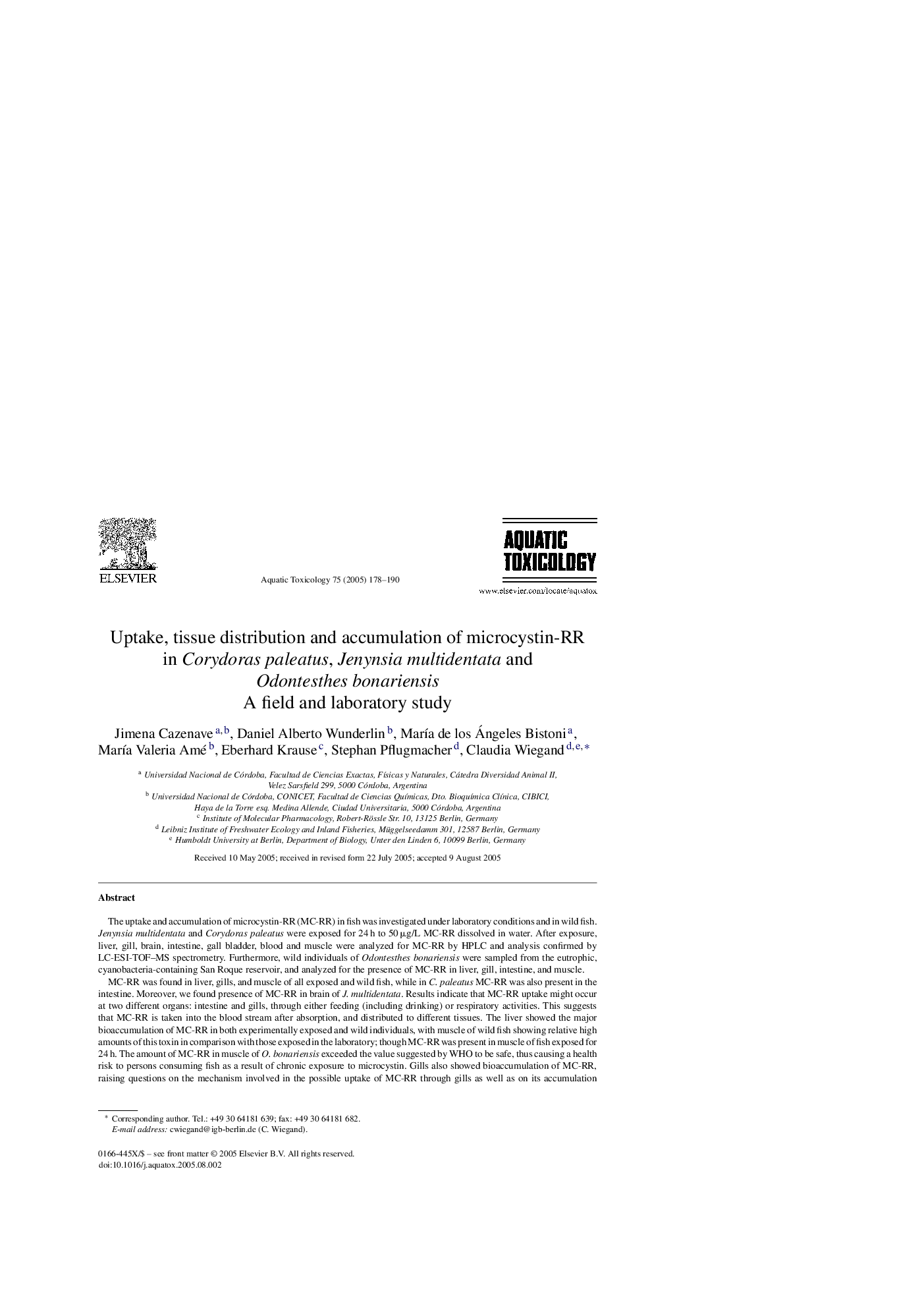| Article ID | Journal | Published Year | Pages | File Type |
|---|---|---|---|---|
| 9478214 | Aquatic Toxicology | 2005 | 13 Pages |
Abstract
MC-RR was found in liver, gills, and muscle of all exposed and wild fish, while in C. paleatus MC-RR was also present in the intestine. Moreover, we found presence of MC-RR in brain of J. multidentata. Results indicate that MC-RR uptake might occur at two different organs: intestine and gills, through either feeding (including drinking) or respiratory activities. This suggests that MC-RR is taken into the blood stream after absorption, and distributed to different tissues. The liver showed the major bioaccumulation of MC-RR in both experimentally exposed and wild individuals, with muscle of wild fish showing relative high amounts of this toxin in comparison with those exposed in the laboratory; though MC-RR was present in muscle of fish exposed for 24Â h. The amount of MC-RR in muscle of O. bonariensis exceeded the value suggested by WHO to be safe, thus causing a health risk to persons consuming fish as a result of chronic exposure to microcystin. Gills also showed bioaccumulation of MC-RR, raising questions on the mechanism involved in the possible uptake of MC-RR through gills as well as on its accumulation in this organ. Although MC-LR has been reported in brain of fish, this is the first report confirming the presence of MC-RR in this organ, which means that both toxins are able to cross the blood-brain barrier. These findings also raise questions on the probable neurotoxicity of microcystins.
Keywords
Related Topics
Life Sciences
Agricultural and Biological Sciences
Aquatic Science
Authors
Jimena Cazenave, Daniel Alberto Wunderlin, MarÃa de los Ángeles Bistoni, MarÃa Valeria Amé, Eberhard Krause, Stephan Pflugmacher, Claudia Wiegand,
